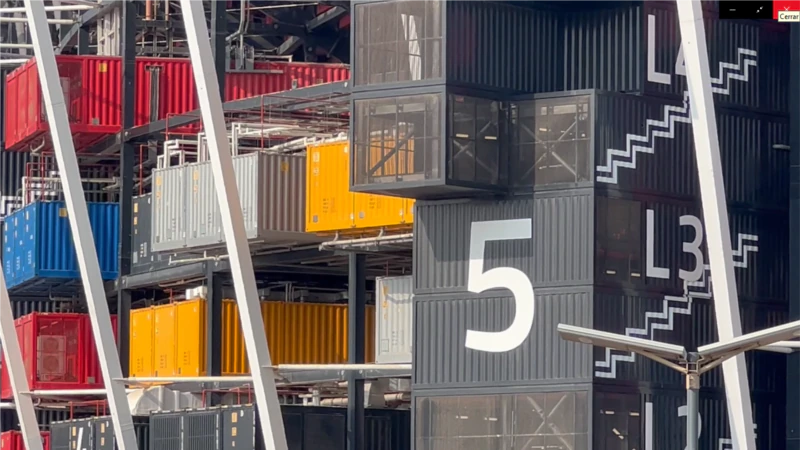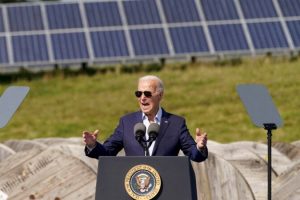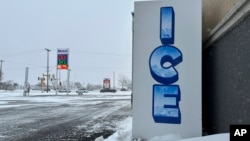Everything is ready for the soccer teams of Mexico and Poland to play on November 22 in the new and monumental sporting work of Qatar baptized as Stadium 974, the first considered friendly with the environment.
This new colossus for Qatar 2022 is considered an architectural innovation and the first “sustainable” sports megastructure, for having been built with recycled containers.
After the World Cup party, the authorities of the Qatari capital, Doha, have planned to dismantle this stadium with a capacity for 40,000 spectators and provide the neighborhood of the Ras Abu Aboud district with a community garden.
The work, designed by the firm Fenwick Iribarren Architects, may be sent to the next World Cup venue, as it has been conceived for such purposes.
The design itself contains its own particularities, such as numbering of the pieces, colors and identifications on each beam and column that can be reassembled like a set of Legos.
The architects built the stadium using ancient concepts for colossal works, such as coupling it to crosswinds to ventilate it naturally.
Those selected and the thousands of fans who will attend this World Cup party will also try the colossus 974, whose number is not arbitrary because it hides important codes of the host country and of the work itself.
“The 450,000 square meter stadium is situated on an artificial promontory, facing the sea. Its modular design incorporates 974 recycled shipping containers in homage to the industrial history of the site and the international dialing code for Qatar (+974)”, explains the review of the work.
The Mexican architect Mónica González comments to the voice of americawhich for this work for sports use has been based on a principle that was being worked on on a smaller scale with “removable architecture”.
“It is very important and useful in these times when we must think about the environment, and the fact of using different colors for the different functions of the building also seems very interesting to me”, explains the architect.
easy to build
The host country has reiterated that both the containers and the seats used for this stadium “will be dismantled later and provided as assistance to other underdeveloped countries in the world.”
974 has also drawn attention for being the “first temporary venue in the history of the FIFA World Cup”.
The delegations that have gone ahead to attend the World Cup realize that this stadium is emerging as one of the most spectacular and emblematic venues of the sports fair, which from its conception and the name itself denote a connection with the identity of the Arab country.
The construction process began in 2017, long after the other venues were already under construction, and the excavation of the land was completed in July 2019.
Immediately the batches of containers began to arrive to start assembling the pieces like a set of Legos. These were already prepared from the factory to speed up the works. The steel structures were expanded.
The OVA visited the perimeter of the stadium last week, where it was found that for now the work teams are fine-tuning details on the outskirts for the respective security booths and exit and entry paths for the attendees.
Sports coach José Benítez, who directs his Soccer School project in Maryland, Soccer Arenahe told the voice of america that another obvious advantage of this removable and reused stadium in another country is that it would reduce the budgets that countries have to incur to be World Cup venues.
Brazil, host of the World Cup in 2014, spent millions of dollars, well above budget, and today a good part of the 12 stadiums, including the Arena Amazonia, the Arena Pantanal Stadium and the Brasilia National Stadium, are considered mere “white elephants”.
“The good thing about this is that the famous white elephants are not going to exist anymore. Brazil built stadiums that were never used again, with infrastructure that cannot be used for other things,” says Benítez.
Indicative colors
A work of this magnitude to concentrate crowds cannot overlook any detail. The team of architects placed emphasis on providing colors to the different areas of use.
This guarantees not only harmony to the complex but ease for the spectators who have to locate the service points beyond the stands.
Thus, the food sales sites are in blue, the bathrooms in yellow, the areas for security and first aid have been painted dark green.
Sport does not conflict with faith, the builders also designated special areas for men to pray in silver and for women in black.
The work also considered an office space with all the communities so that it can house the president of the International Federation of Associated Football (FIFA) Gianni Infantino, with direct access to the box and above all with a bathroom included and other attentions typical of the head of the organization, although it has not yet been confirmed whether it will use that allocated space.
And if in the starting position of the players there is an urgency to use the bathroom, the architects also thought of it with the “Last Minute Toilet” duly identified in the corridor that goes from the dressing rooms to the playing field.
Argentina will also face Poland at this stadium on November 30.
Connect with the Voice of America! Subscribe to our channel Youtube and turn on notifications, or follow us on social media: Facebook, Twitter and Instagram.





![[Img #74664]](https://thelatestnews.world/wp-content/uploads/2024/12/James-Watson-The-controversial-genius-behind-the-double-helix-150x150.jpg)









